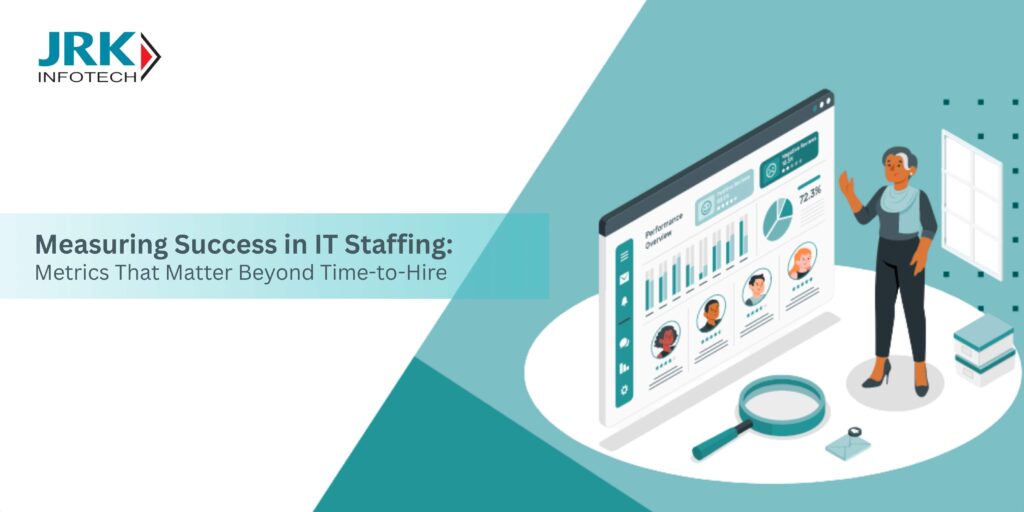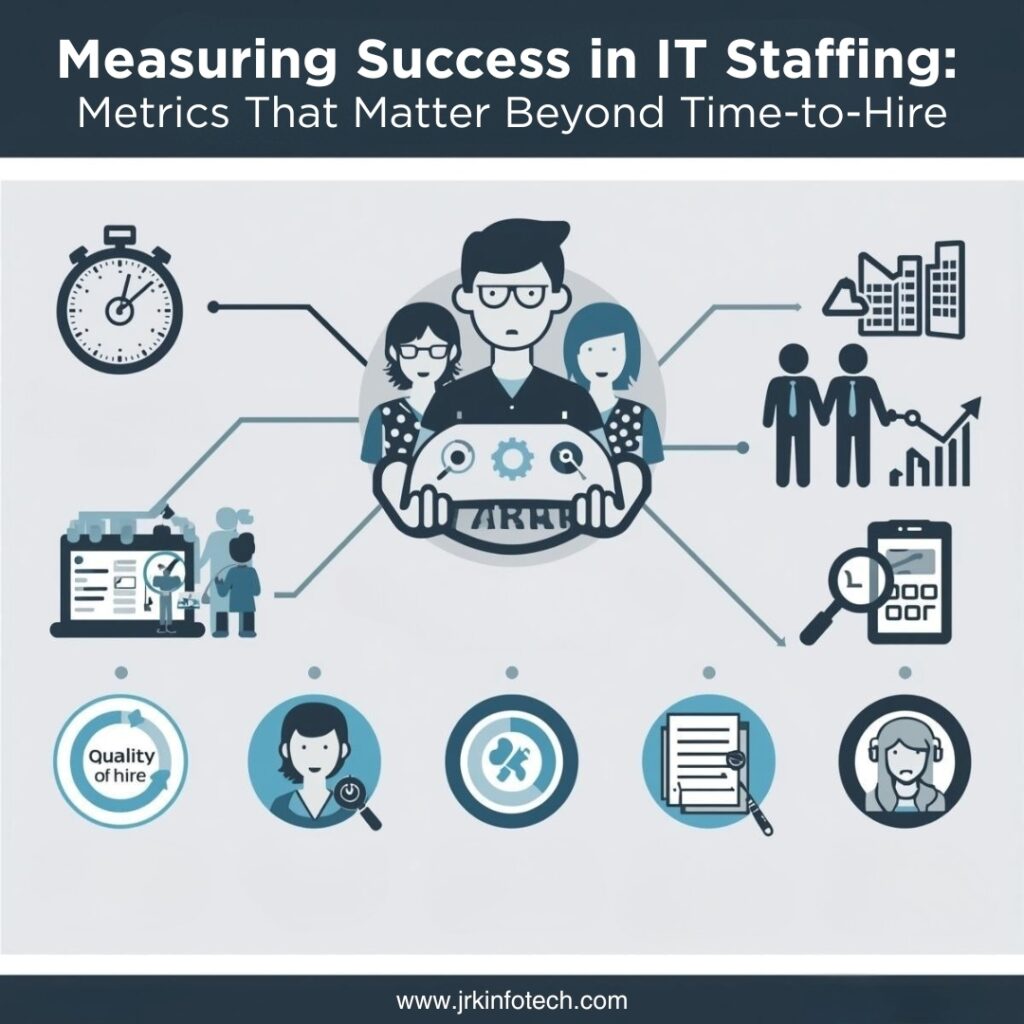Measuring Success in IT Staffing: Metrics That Matter Beyond Time-to-Hire

In today’s fast-evolving technology landscape, companies can no longer evaluate their IT staffing performance using traditional measures alone. While “time-to-hire” remains important, it only tells part of the story. To truly assess the effectiveness of an IT recruitment strategy, organizations must focus on deeper, more meaningful metrics that reflect both quality and long-term business impact.
Why Traditional IT Staffing Metrics Are No Longer Enough
The IT industry thrives on agility and innovation. Hiring speed is essential, but it doesn’t guarantee success. A candidate placed quickly but lacking the right technical depth, adaptability, or cultural fit may cost more in the long run. That’s why modern IT staffing companies now adopt multi-dimensional measurement frameworks — ones that focus on performance, retention, and overall value creation.
Key Metrics That Redefine IT Staffing Success
1. Quality of Hire
This is one of the most crucial IT staffing metrics today. It measures how well new hires perform and contribute to business outcomes. Evaluating post-placement feedback, technical performance, and project impact helps identify whether the right candidate was chosen — not just the fastest one.
2. Retention Rate
High turnover can signal deeper recruitment issues. Tracking how long placed candidates stay in their roles provides insights into job satisfaction, skill alignment, and cultural fit. Strong IT staffing partners aim for consistent retention, especially in long-term augmentation projects.
3. Client and Candidate Satisfaction
Client feedback scores and candidate experience surveys reveal how well the hiring process works from both ends. Staffing agencies that prioritize transparency, communication, and smooth onboarding see higher satisfaction rates — which directly correlate to stronger business relationships.
4. Skill Match Accuracy
Matching technical skills to job requirements is essential, especially in specialized domains like AI, cybersecurity, and cloud computing. A high skill match accuracy rate indicates the staffing firm’s deep understanding of client needs and access to well-vetted IT professionals.
5. Productivity Ramp-Up Time
Another emerging IT staffing KPI is how quickly a new hire reaches full productivity. Reducing ramp-up time through proper onboarding, training, and project alignment can significantly improve project outcomes and ROI.
6. Offer Acceptance Rate
A strong offer acceptance rate reflects effective communication, competitive compensation benchmarking, and accurate role representation. It’s a key measure of a staffing agency’s ability to attract the right IT talent and close positions efficiently.
Going Beyond Numbers: Measuring Impact and Value
True IT staffing success lies in business impact, not just hiring metrics. Companies now evaluate staffing partners on how well they support digital transformation goals, innovation pipelines, and operational efficiency.
Staff augmentation is no longer about filling seats — it’s about building strategic partnerships that align talent with technology roadmaps. Metrics like “innovation contribution” and “project success rate” are becoming equally important indicators of staffing excellence.
How IT Staffing Companies Are Improving Their Metrics
Leading staffing firms like JRK Infotech use advanced tools and analytics to measure and enhance hiring outcomes. They leverage AI-powered screening, predictive analytics, and performance dashboards to refine every step of the recruitment process.
-
AI Matching Engines: Enhance candidate-job compatibility.
-
Performance Analytics: Track retention, productivity, and satisfaction in real time.
-
Continuous Feedback Loops: Improve future placements based on past learnings.
By focusing on continuous improvement, these firms ensure clients get not just the right talent, but measurable business growth.
Building a Data-Driven IT Staffing Strategy
To stay competitive, organizations should integrate these IT staffing metrics into their workforce planning. Regularly reviewing KPIs such as quality of hire, retention, and skill accuracy provides clear visibility into what’s working — and what needs refining.
Partnering with a data-driven IT staffing provider ensures transparency, accountability, and long-term alignment with business goals.
At JRK Infotech, we specialize in helping companies measure, optimize, and scale their IT workforce efficiently through staff augmentation and specialized talent solutions.



